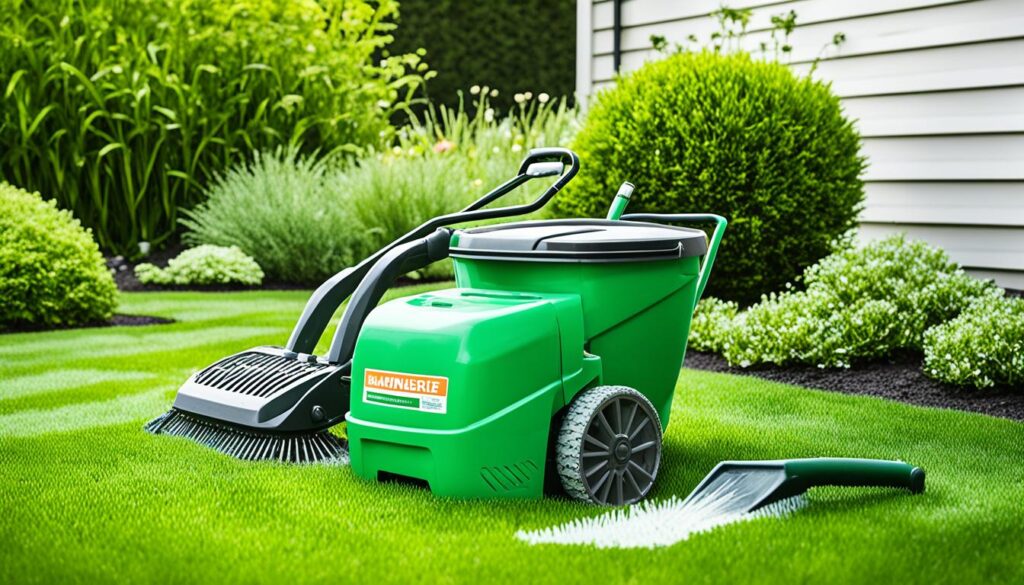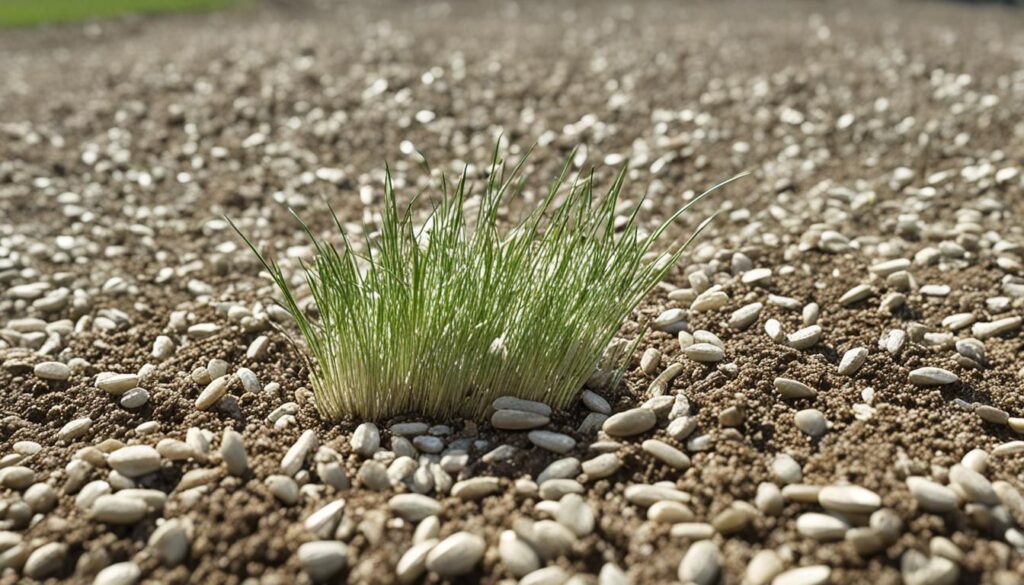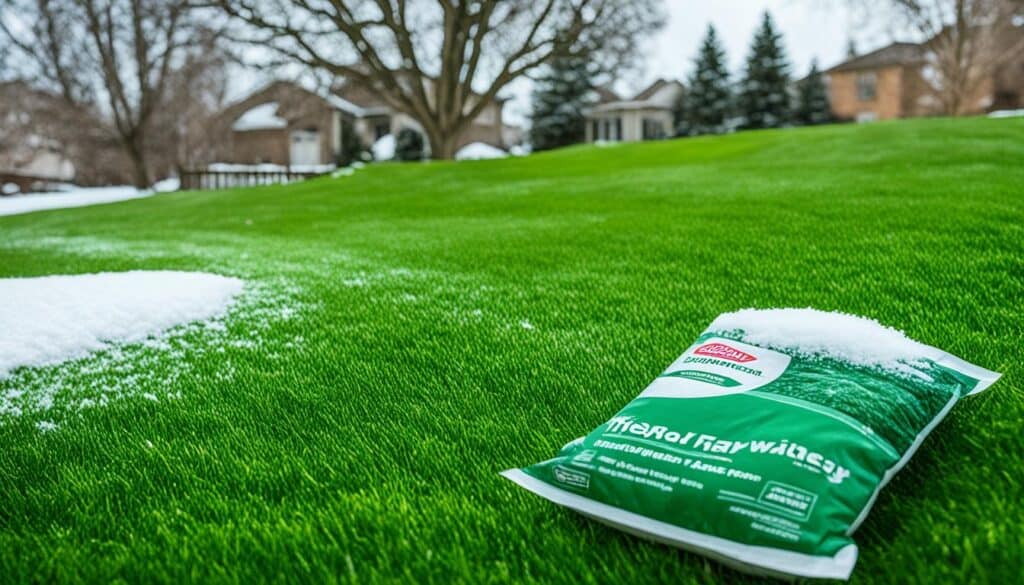Did you know a well-kept lawn can boost your property’s value by up to 20%? This fact shows how vital proper lawn care is. It’s key for both experts and beginners to know about lawn maintenance. This knowledge helps create a lush, green space that makes your home look great and adds value.
Lawn maintenance means doing various tasks to keep your grass healthy and looking good. These tasks include mowing and fertilizing. They are key for a vibrant yard. Let’s dive into the main parts of lawn care and how they help your outdoor space thrive.
In Florida, lawn care is even more important because of the year-round use and its effect on home looks. The state’s unique climate and environment need special care. For example, using drought-tolerant grass like St. Augustine in West-Central Florida cuts down on water use and supports sustainability.
Good lawn care is about more than just looks. It’s about knowing about soil health, grass types, and what your lawn needs seasonally. Using smart watering systems and tailored fertilizers makes sure your lawn gets the right care. These steps not only make your yard look better but also help the environment.
Key Takeaways
- Well-maintained lawns can boost property value by up to 20%
- Lawn care involves various tasks like mowing, fertilizing, and watering
- Florida’s climate requires specialized lawn maintenance practices
- Choosing the right grass type is crucial for sustainable lawn care
- Smart irrigation and customized fertilization improve lawn health
- Proper maintenance contributes to both aesthetics and environmental benefits
Understanding Lawn Maintenance Basics
Lawn care is key to a beautiful yard. It’s more than just cutting the grass. It’s about taking care of your outdoor space. Let’s look at the main parts of lawn maintenance and why they’re important.
Definition and Importance of Lawn Care
Lawn care means doing things to keep your grass healthy and looking good. It helps your yard look nice and can even make your home look better. It includes regular mowing, watering, and testing the soil to help your grass grow well.
Key Components of a Healthy Lawn
For a lawn to do well, it needs a few things:
- Soil Health: Testing the soil tells you about its pH and nutrients. This helps you know what fertilizers you need.
- Grass Types: Picking the right grass for your area is key. In cooler areas, cool-season grasses like Kentucky bluegrass work well. In warmer places, warm-season grasses like Bermudagrass are better.
- Watering Schedules: Lawns usually need about 1 to 1.5 inches of water each week. This depends on the type of grass you have.
- Fertilization: Your lawn needs the right food to stay healthy. Nitrogen is especially important for keeping it green and lush.
Benefits of Proper Lawn Maintenance
Putting time into lawn care has many rewards:
| Benefit | Description |
|---|---|
| Improved Curb Appeal | A well-kept lawn makes your property look better |
| Environmental Advantages | Healthy lawns help clean the air and prevent soil erosion |
| Increased Property Value | A nice lawn can make your home worth more |
| Water Conservation | Good care means using less water, which saves money |
By knowing these basics and sticking to a routine, you can have a lush, healthy lawn. Remember, picking the right fertilizer for your grass type and season is key to great results.
What Is Lawn Maintenance?
Lawn maintenance is key to a healthy and attractive outdoor space. It includes regular tasks that help your lawn stay great all year. Let’s look at the main activities, seasonal tasks, and important tools for lawn care.
Core Activities Involved in Lawn Care
Keeping your grass lush and green requires regular tasks. These include:
- Mowing techniques: Cut grass to the right height using sharp blades
- Watering: Provide adequate moisture, especially during dry periods
- Fertilizing grass: Apply nutrients to promote healthy growth
- Weed control methods: Remove unwanted plants to maintain lawn appearance
Full-service lawn maintenance programs cover these core activities. They save you time and effort in keeping your lawn healthy.
Seasonal Lawn Maintenance Tasks
Each season has its own lawn care needs:
| Season | Tasks |
|---|---|
| Spring | Cleanup, seeding, fertilizing |
| Summer | Regular mowing, watering, weed control |
| Fall | Aeration, overseeding, leaf removal |
| Winter | Minimal maintenance, equipment care |
Tools and Equipment for Lawn Maintenance
For effective lawn care, you’ll need these essential tools:
- Lawnmower for regular grass cutting
- Sprinklers or irrigation system for watering
- Fertilizer spreader for even nutrient distribution
- Hand tools like rakes, shovels, and pruning shears
Understanding these lawn maintenance aspects helps you create a beautiful, healthy lawn. It will improve your property’s look and value.
Essential Lawn Care Practices
Proper lawn care is key to keeping your grass healthy and looking great. Let’s dive into some important techniques for a lush lawn.
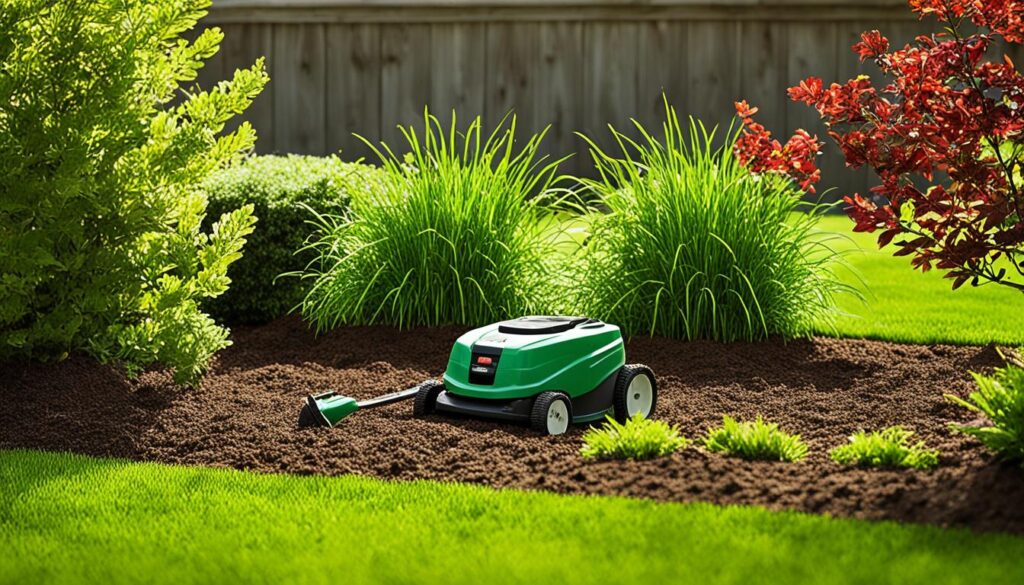
Mowing is a must for a healthy lawn. Cut your grass to the right height for its type. For instance, Bahiagrass does well at 3-4 inches, while Bermudagrass likes 0.5-1.5 inches. Leaving the grass clippings on the lawn helps as natural compost.
Watering is also crucial. Aim for 1-1.5 inches of water per week, adjusting for your area’s climate. Water between 6 a.m. and 10 a.m. to cut down on evaporation. Look for signs like folded leaf blades or a blue-gray color to know when watering is needed.
Fertilizing gives your lawn the nutrients it needs. Use a mix of nitrogen, phosphorus, and potassium. In Florida, fertilize during the growing season, stopping by late September in the north and mid-October in central areas.
Aerating the soil helps with compaction and boosts root growth. Combine this with overseeding to keep your lawn dense and healthy. Keeping your lawn equipment in good shape, like sharpening mower blades, ensures it works well.
| Grass Type | Mowing Height (inches) | Growing Season |
|---|---|---|
| Bahiagrass | 3-4 | Warm |
| Bermudagrass | 0.5-1.5 | Warm |
| Kentucky Bluegrass | 2.5-3.5 | Cool |
| Tall Fescue | 3-4 | Cool |
By following these practices and knowing your lawn’s needs, you’ll have a beautiful, thriving yard.
Creating a Lawn Maintenance Schedule
Having a well-planned lawn maintenance schedule is crucial for a lush and healthy yard. By following a structured plan, you can make sure your lawn gets the care it needs all year. Let’s look at the key tasks for weekly, monthly, and seasonal activities.
Weekly Lawn Care Tasks
Regular upkeep is vital for a healthy lawn. Weekly tasks are the base of your lawn care routine:
- Mowing: Spend about an hour each week, adjusting for lawn size
- Watering: Program your sprinkler system, which may run for 1-2 hours
- Spot-checking for weeds or pests: Allocate 30 minutes to an hour
Monthly Lawn Maintenance Activities
Monthly tasks keep your lawn healthy and looking good:
- Fertilizing grass: Takes about 30 minutes per section
- Edging: Plan for 30 minutes to an hour
- Repairing damaged areas: Set aside approximately one hour
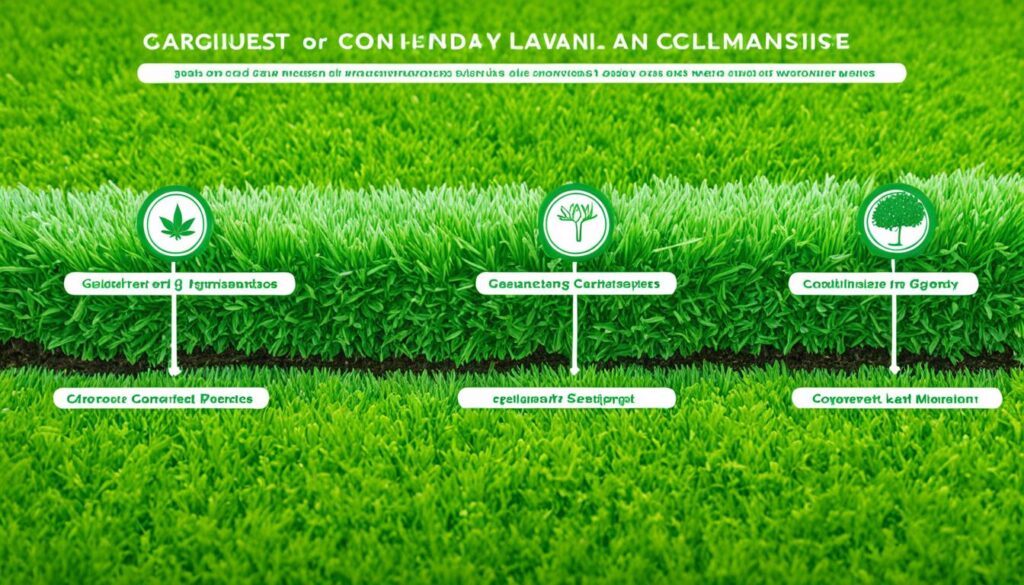
Seasonal Lawn Care Considerations
Adjust your lawn care to the seasons. In warmer places like Florida, seasonal lawn care is key for a healthy yard all year. For cool-season grasses in 23 states like New York and Pennsylvania, focus on spring seeding and fall fertilizing.
For warm-season grasses in 10 southern states like Texas and California, care needs differ. Summer is the peak growth season for these grasses.
Using sustainable lawn practices can save time and resources. Think about using organic fertilizers, optimizing watering schedules, and leaving grass clippings as natural mulch. Tailor your approach to your grass type and climate for a beautiful, easy-to-maintain lawn that does well in every season.
Conclusion
Keeping your lawn in top shape is key to having a beautiful outdoor area. By following the right lawn care tips and using sustainable practices, you can make your property look better and even increase its value. In fact, a well-kept lawn can boost your property’s value by up to 15%.
Choosing professional lawn care services has many advantages. They can save you 4 to 6 hours every month on upkeep and cut weed infestations by up to 90% in just three months. These pros use 50% less water thanks to their knowledge in watering wisely. This helps the environment and saves you money.
It’s important to keep your lawn equipment in good shape for the best results. Experts handle tasks like mowing, edging, trimming, and cleaning up debris. They also test the soil to make sure your lawn gets the right nutrients and care it needs to flourish.
Investing in proper lawn care does more than just make your home look better. It also helps the environment. Lawns under expert care produce 30% less carbon emissions thanks to green practices. A well-kept lawn shows you care about your home and the planet.
FAQ
What is lawn maintenance?
Lawn maintenance means doing things to keep your grass healthy and looking good. This includes testing the soil, knowing about different grass types, watering right, mowing, fertilizing, controlling weeds, and taking care of your lawn through the seasons.
Why is lawn maintenance important?
Taking good care of your lawn makes it lush and green. This boosts your property’s value and helps the environment. It improves air quality and prevents soil erosion.
What are the key components of a healthy lawn?
For a healthy lawn, focus on soil health, choosing the right grass, and doing regular maintenance. This includes watering, mowing, fertilizing, and controlling weeds.
What are the core activities involved in lawn care?
Key lawn care tasks are mowing, watering, fertilizing, and controlling weeds. Each season has its own tasks. Spring is for cleanup and seeding. Summer is for watering and mowing. Fall is for aeration and overseeding. Winter is for minimal upkeep.
What tools and equipment are needed for lawn maintenance?
You’ll need a lawnmower, sprinklers, a fertilizer spreader, and hand tools like rakes, shovels, and edgers for lawn care.
How often should I mow my lawn?
Mow your lawn often, but don’t cut off more than one-third of the grass blade at once. The right height to cut your grass depends on the type of grass, usually between 1-4 inches.
How much water does my lawn need?
Lawns need about 1 to 1.5 inches of water each week, from rain or sprinklers. It’s better to water deeply and not too often.
When should I fertilize my lawn?
Fertilize your lawn based on soil tests and what your grass type needs. Cool-season grasses get fertilizer in early spring and fall. Warm-season grasses get it in late spring and summer.
How can I control weeds in my lawn?
Keep weeds away by mowing at the right height and fertilizing correctly. Sometimes, you might need to use herbicides or pull weeds by hand for tough weeds.
How often should I aerate and overseed my lawn?
Aerate your lawn every year to help air and water reach the soil better. Overseed in the fall for cool-season grasses or in late spring/early summer for warm-season grasses. This keeps your lawn thick and healthy.

